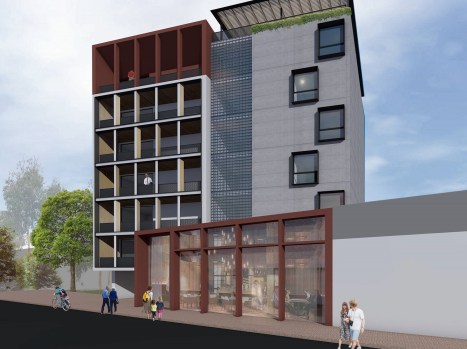The Australian Sustainable Built Environment Council (ASBEC) has released a new policy platform to address Australia’s housing crisis, called Improved Housing Outcomes.
“We know Australia is in the grip of a housing crisis. A growing population and skyrocketing house prices mean living affordability and housing security is being stretched to the limit,” said Rebecca Douthwaite, chairwoman of ASBEC’s Housing Policy Working Group and policy manager, housing & planning at the Property Council of Australia.
ASBEC’s members from across the built environment have nominated a package of policy fixes needed to resolve housing affordability issues and deliver high quality, well designed homes to meet Australia’s diverse needs.
“First, we need to work to a plan. Future infrastructure needs to be scoped and delivered in the right places. Diverse medium- and high-density urban housing should be built along transport corridors and near amenities. Incentives to build the right type of homes are needed, while planning assessment for higher density developments must also be simplified,” said Rebecca.
While the sticker price of homes is important, the costs of heating, cooling and lighting our houses are also crucial, along with the costs of travel to work and services.
“The key to cheaper running costs is improved energy efficiency,” said ASBEC’s executive director Suzanne Toumbourou.
“Not only are more energy efficient buildings more comfortable and healthy, but they have the added bonus of being a fast and cost-effective way to reduce emissions as well!
“Public understanding of the benefits of energy efficient housing is limited, so education is required. Governments also need to act to improve conformance and compliance with the energy performance standards for buildings in the National Construction Code. If not, people won’t get the homes they’re paying for,” said Suzanne.
Facilitating density is also vital, so that people can be connected to employment and amenity, whilst accommodating growing populations. However, introducing high-density housing to existing communities is a fraught process. It is critical to engage locals from the start.
“We can fix the critical issues relating to living affordability, and deliver a diverse range of well-designed, well-located, affordable, sustainable housing for all the Australians who need it,” said Rebecca Douthwaite.
“But we’ll need to act on the priorities identified by the building sector in ASBEC’s Improved Housing Outcomes platform.”
What’s in the Improved Housing Outcomes platform?
Housing affordability is defined and measured in a variety of ways. For ASBEC, affordability means enabling people to make a housing choice that suits their needs within their available budget – regardless of whether it involves renting, ownership or having options as they age.
Housing is integral to health, wellbeing and economic outcomes for all Australians. Housing policy has a significant effect on the lives of Australians, because it influences the connectivity and proximity of housing to other land uses, including transport, employment, community services such as hospitals and schools, and recreational activities. It is also a significant contributor to economic activity, being responsible for many thousands of jobs both directly and indirectly.
To support affordable living outcomes, housing policy must promote the provision of diverse dwellings to cater for needs at all stages of life, and encourage density in the right places, with improved access to jobs and services. This requires:
- Long-term alignment between population growth and housing supply, with periodic targets integrated into adopted planning policy.
- Strategic planning for accessible centres to link residential concentrations with jobs and services, reducing the costs of transport and vulnerability to social exclusion. Cost-effective and timely delivery of urban infrastructure integrated with strategic planning, including public transport, roads, community facilities and utilities for greenfield and urban infill areas.
- The adoption of best-practice design principles to functionally enhance the sustainability and resilience of the built environment, with high-quality urban design ensuring creating a sense of place.
- Improved sustainability of buildings, including minimum standards for the energy performance of new and existing buildings, which recognise whole of life costs.
- Continuous reform of land use planning and processes, to encourage supply of diverse housing where it ensures equivalent incentives for detached dwellings and a diversity of medium density housing types that promote design quality and sustainability.
- Ensuring the market operates efficiently to supply housing for all market segments, including the availability of housing stock that meets the needs of very low to moderate income earners.
- Regulatory frameworks that encourage innovation and efficiencies in the housing supply chain, such as modular construction, pre-fabrication and bringing new products to market more cost efficiently.
Comment below to have your say on this story.
If you have a news story or tip-off, get in touch at editorial@governmentnews.com.au.
Sign up to the Government News newsletter
Most read
Scathing report finds little has changed at PwC
Qld council welcomes progress on massive battery system
‘Local’ procurement turns out not to be so local, committee hears
Another report finds local government falling down on cyber security
MoG changes see regions, investment return to NSW Premier’s Department

